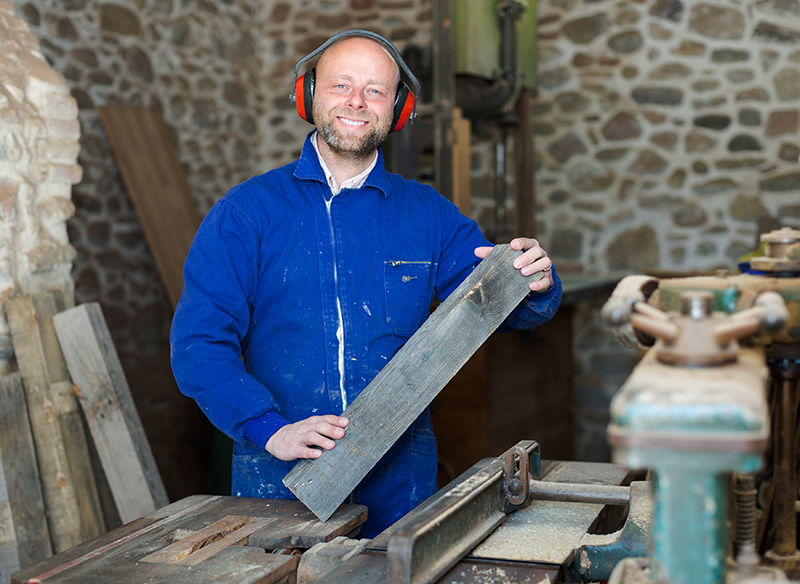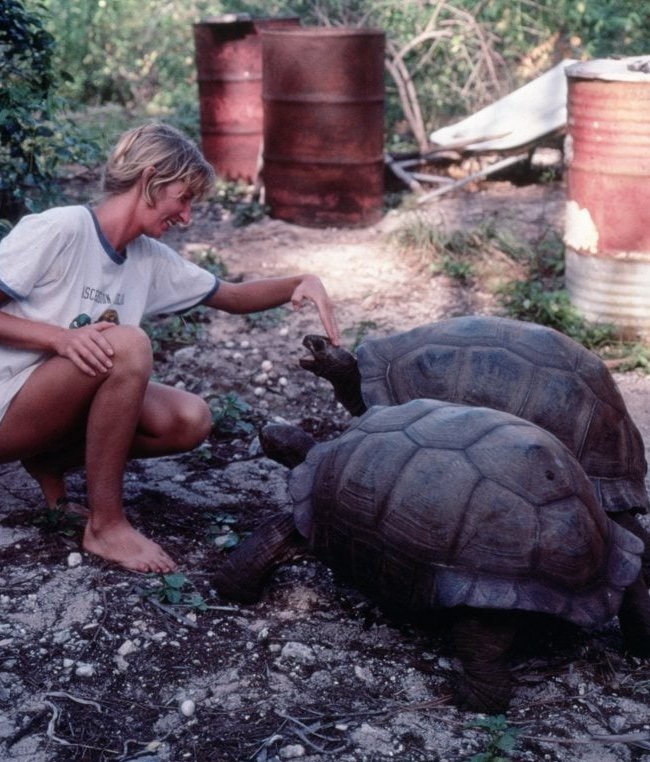Sea turtle expert Dr. Jeanne Mortimer warns that unchecked development on Assomption Island threatens Seychelles’ most critical nesting beach. With over four decades of research, Mortimer advocates for science-based, turtle-friendly development to protect endangered species. Her quiet, persistent work underscores the urgent need for conservation-led planning in fragile island ecosystems.
The post They Call Her Madam Torti. She Might Be the Only One Who Can Save Seychelles Turtles appeared first on Green Prophet.
Jeanne Mortimer, the Dianne Fossey of sea turtles. She changed everything in the Seychelles.
Assomption Island is the back door to one of the last unspoiled corners of Seychelles, the Aldabra Atoll. The Seychelles is a nation of people that control 115 islands scattered across the Indian Ocean. With just over 100,000 people and a heroin crisis afflicting nearly 10% of its population, this small country faces vast and complex challenges. But perhaps none are more pressing—or more invisible to the wider world—than the fate of its sea turtles.
At the center of this story is Dr. Jeanne A Mortimer, an American-Seychellois biologist who has been studying sea turtles since 1973 and working in Seychelles since 1981. Known affectionately as “Madam Torti” among locals, Jeanne is not an activist. She’s not leading protests or lobbying parliament. She is, as always, knee-deep in research—methodically documenting, measuring, walking the beaches at dawn, and then later at night when the turtles nest, and publishing what she finds.
And what she finds is urgent.
Assomption Beach Too Valuable to Lose
Assomption Island, view from a plane.
Assomption lies just 20 miles from the Aldabra Atoll, a UNESCO World Heritage Site world-renowned for its giant tortoises, sea turtles, and pristine ecosystem. But while Aldabra has enjoyed global protection since 1968, Assomption, once over-mined for guano, remains largely overlooked. Development on Assomption will directly threaten Aldabra Atoll, considered to be an outpost of evolution.
According to Mortimer, Assomption once had the largest population of nesting green turtles in all of Seychelles. The island’s seven kilometers of mostly uninterrupted beach and deep offshore approach make it ideal for both turtle nesting and tourism. “It’s a perfect green turtle beach,” she explains, “better than Aldabra’s in many ways.”
That perfection now puts it at risk. Plans have emerged by a Qatari-based company Assets Group—cloaked in secrecy—for a luxury development of up to 37 private villas along the beach. Some like Syechelles presidential candidate Marco Francis, says the government has been bought off for $50 million. Assets Group agreed to an interview with Green Prophet but it’s been a month and they have not responded to our questions over allegations of terror financing and lack of environmental oversight.
Journalists have been there recently on Assomption, but they were not allowed to leave the tarmac or take photos. Building was clearly visible and construction crews are digging away, says a source to Green Prophet firsthand.
The scale and style of the project, suggest permanent disruption to this fragile ecosystem. No formal environmental survey has been conducted. No baseline turtle data has been published. And Mortimer, arguably the foremost authority on turtles in the region, has not been consulted.
Mortimer’s approach is neither alarmist nor oppositional. Her power lies in knowledge. After receiving her PhD under legendary sea turtle biologist Archie Carr at the University of Florida, she brought her expertise to Seychelles at the request of WWF and the local government. Her mandate: to study all turtle activity across the archipelago’s 155 islands.
See our talk with Jeanne Mortimer:
To reach remote islands like Cosmoledo, she traveled aboard supply ships like the Cinq Juin, slept on the floor of yacht galleys during high monsoons, getting soaked with water, and sometimes posed as a cook just to gain passage. Guests aboard the cabin caught on that she knew too much about Biology to be a standard cook.
Once, she stayed five months on Cosmoledo atoll among a dozen Seychellois turtle hunters, documenting the precise dynamics of a community reliant on harvesting turtles, sharks, and fish. When camping at night she wore socks on her feet and keep her hair wrapped in cloth so island rats wouldn’t nibble on her toes or collect her hair for making nests. She even ate turtles because food choices, those days, were slim.
In the early 80s: Fishermen cleaning and salting their catch at Grand Ile at the end of the day. Salt and fish are stored in the empty turtle carapaces on the ground. Image via Jeanne Mortimer.
Her presence changed them. “When I first arrived, the men were worried I would interfere,” she later wrote. “But by living with them, working alongside them, they developed a new perspective.” She never asked them to stop; she simply watched, listened, and recorded. That data formed the foundation for Seychelles’ 1994 decision to ban turtle hunting entirely.
She laments those days even, because they had a culture around hunting sharks and fishing and turtles, citing a fondness for Mazarin as the fisherman of fishers. She didn’t judge as it was their income and way of life. There are even times when she helped salt the fish for fear it would spoil before reaching the market.
“Turtles were harpooned from the small fishing boats. I sometimes went turtle hunting with the
men. Photos show Mazarin ready to throw the harpoon, and then pulling the turtle up to the boat.”
“Shark Fishing at Cosmoledo in 1982. Sometimes the men, especially Mazarin, went out in their small boats and fished for shark all night long. A single night’s catch might comprise as many as 10 large sharks,” says Jeanne Mortimer. Image supplied by Mortimer.
Assomption: A Mirror of the Past
She says that what happened at Cosmoledo in the 1980s is relevant today on Assomption. The threat has shifted—from salted meat and tortoiseshell to artificial light and luxury development—but the stakes remain the same.
“Turtles are most vulnerable when they’re nesting,” Mortimer explains. “And we now know that females may take 30 to 35 years to reach sexual maturity. When they do, they return to the same beach again and again—sometimes for decades.”
These are the turtles that Assomption once hosted in abundance. And thanks to early signs of recovery, they are starting to return. If left undisturbed, Mortimer believes Assomption’s green turtle population could rival or exceed Aldabra’s.
But the Qatari villa development underway presents a new kind of threat. “The biggest issue is lighting,” she says. “Turtles won’t nest if there’s light on the beach. Hatchlings get disoriented. It’s one of the most studied impacts we know.”
And it’s not just turtles. Assomption hosts rare insect communities and bat populations, many of which could be wiped out by light pollution alone. Developers have reportedly promised a 1% footprint—but Mortimer warns that artificial light knows no boundaries. She also knows how devastating pesticides against bugs will harm the insects and the bats that feed off them. She once wanted to be an entomologist and knows how delicately all parts of island nature is connected.
In over five decades of work across more than 20 countries, Mortimer has seen conservation succeed. The many long-term monitoring programs she has coordinated in Seychelles—at places like Cousin, Aride, D’Arros and Aldabra—are now scientific goldmines. They prove that when science and policy align, recovery is not only possible, it is inevitable. Save Our Seas Foundation has been very helpful to her research, she says.
Jeanne Mortimer with a sea turtle
But Assomption is different. No formal turtle survey has ever been published for the island. No environmental management plan is in place. And development is already underway. Educating locals is one thing but now with international investment it’s a beast she has no experience in tackling and is letting environmental activists do the job.
It is, says Mortimer, “a very valid concern.”
She’s not fighting it. But she’s watching, documenting, and—when asked—offering solutions. “Turtle-friendly development is not a metaphor,” she explains. “It’s a science. Setback lines. Blackout curtains. No visible light from the beach. We know how to do this.”
The problem, as she puts it, is not science right now —it’s politics. “I don’t know why they haven’t asked me to help. But I would.”
Despite everything, Mortimer remains focused on what can still be saved. She invests where she can have impact. And she believes in young people—especially the children of those with power.
“If a Qatari child sees a turtle nesting and says, ‘Hey Mom, Dad, we should protect this,’ that might do more than any scientist,” she told me.
Legendary turtle expert Jeanne Mortimer watches a hawksbill turtle return to the ocean after laying her eggs on one of D’Arros Island’s beaches. Photo by Rainer von Brandis | © Save Our Seas Foundation
Her advice to the next generation isn’t to give up plastic straws. It’s to demand structural change. “The real responsibility lies with governments and corporations. Not individual guilt. We need investment in alternatives—seaweed-based plastics, smart design, policy change.”
Dr. Mortimer served as a mentor and inspiration to Dr. Yaniv Levy, now one of the Mediterranean’s leading sea turtle conservationists who lived on and near Aldabra Atoll for 2 years. He has built a sea turtle hospital, develops complex rehabilitation devices, and artificial flippers and runs a breeding program where he releases thousands of baby sea turtles back to the sea every year with the help of 600 volunteers. His latest research shows how animal feedstock bags tossed into the sea, contribute to sea turtle mortality.
Levy says that Mortimer’s encouragement and science-first approach inspired him when he met her on Aldabra and shaped his philosophy of protection through data and experience. She is the grandmother of sea turtle research, and leads the conversation globally in the annual sea turtle conference.
Meanwhile, Mortimer isn’t slowing down, but rather speeding up so the science gets published. She continues to write papers, to walk beaches, and to document what others might overlook. Assomption, for now, remains a question mark—a fragile bridge between two possible futures.
—
Karin Kloosterman is a former biologist and works as a science journalist and founder of Green Prophet. She interviewed Dr. Jeanne Mortimer for this story in Seychelles and is actively investigating the conservation status of Assomption Island.
To read more in our series see:
Seychelles Island under threat and linked to terror funds
Seychelles and the battle with royalty and rats – a talk with Adrian Skerrett
He lived on Aldabra Atoll and was inspired to protect sea turtles forever
Nirmal Jivan Sha on the history of conservation in the Seychelles
Seychelles Island sold to Qatar, leaving the conservationists out
The post They Call Her Madam Torti. She Might Be the Only One Who Can Save Seychelles Turtles appeared first on Green Prophet.
Recommended Story For You :

Bringing Dead Batteries Back To Life Is Simple!

SEPTIFIX to the Rescue! Say Goodbye to Problems and Hello to Savings

Ecomposing of Paper Towels Produce Methane Gas

A Leading Cause Of Global Warming!

A cleaner world where energy is abundant essentially free

and sourced directly out of the inherent power of the space surrounding us.

MIT Discovery can cut power bills by 65%

Easy DIY Power Plan Will Change Our World Forever

Discover the World with Our Passionate Geography Teacher in Memphis!




